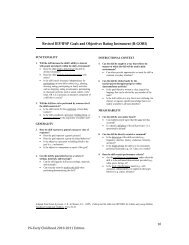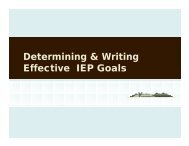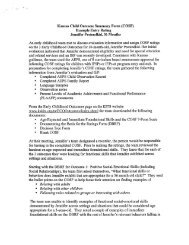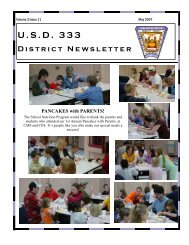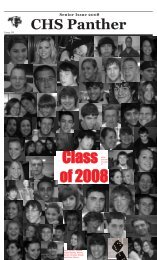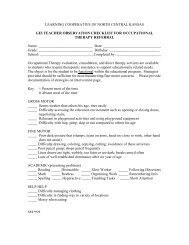DIBELS Benchmark Goals Three Assessment Periods Per Year ...
DIBELS Benchmark Goals Three Assessment Periods Per Year ...
DIBELS Benchmark Goals Three Assessment Periods Per Year ...
Create successful ePaper yourself
Turn your PDF publications into a flip-book with our unique Google optimized e-Paper software.
<strong>DIBELS</strong> <strong>Benchmark</strong> <strong>Goals</strong><strong>Three</strong> <strong>Assessment</strong> <strong><strong>Per</strong>iods</strong> <strong>Per</strong> <strong>Year</strong>Note: <strong>Goals</strong> and cutpoints for risk for Grades 4 through 6 are based on CBM normative information from 4th and 5th grade students inFall, Winter and Spring from Hasbrouck and Tindal (1992) as well as average slope of reading progress information from Fuchs, Fuchs,Hamlett, Walz, & Germann (1993). Empirical evidence of the percent achieving subsequent literacy goals is not yet available for theseinitial estimates.In addition to these preliminary estimates of goals and risk indicators, local normative information is available for each participatingschool district. A reasonable approximation of goals and cut scores for risk are also available from the local norms. The 40th percentileusing local norms provides an approximate goal, and below the 20th percentile using local norms provides an approximate at-riskindicator.With additional research these preliminary estimates will be refined based on the odds of achieving subsequent literacy goals. Eachdistrict can examine these odds by entering scores on a selected outcome for relevant grade levels. For example, in Oregon, a stateassessment is given in fifth grade with a specific goal for meeting expectations. If a participating school district enters the fifth gradescores for all fifth grade students and the Oregon State <strong>Assessment</strong> goal, the <strong>DIBELS</strong> Data System will provide the odds of achievingthe goal for these initial estimates of goals and risk indicators.ReferencesFuchs, L. S., Fuchs, D., Hamlett, C. L., Walz, L., & Germann, G. (1993). Formative evaluation of academic progress: How much growthcan we expect? School Psychology Review, 22, 27-48.Hasbrouck, J. E., & Tindal, G. (1992, Spring). Curriculum-based oral reading fluency norms for students in grades 2 through 5. TeachingExceptional Children, pp. 41-44.dibels.uoregon.edu© University of Oregon Center on Teaching and Learning. All rights reserved. Revision Date: July-31-2008



